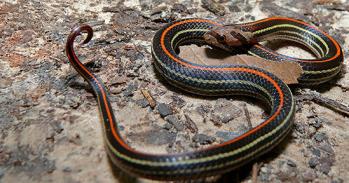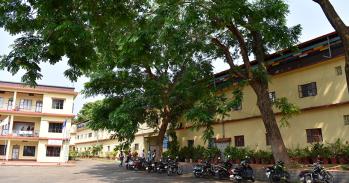
For centuries mountains have been observed, imagined and explored. Today, these extreme environments are studied by scientists as indicators of changes in the world’s climate. An event this Friday (22 November) brings together a range of specialists to share their experiences.
For centuries mountains have been observed, imagined and explored. Today, these extreme environments are studied by scientists as indicators of changes in the world’s climate. An event this Friday (22 November) brings together a range of specialists to share their experiences.
Each mountain has a different character – some are benign, some wicked and some secret
Tsering Dawa
A group of experts with personal and contrasting experiences of some of the world’s most breathtakingly beautiful and extreme environments will be taking part in a public discussion, ‘Mountaineering in a Changing Climate’, on Friday (22 November). The event, which is free and open to all, will take place in the Lady Mitchell Hall on the Sidgwick Site, Cambridge University, from 5pm.
For centuries the world’s most majestic mountain ranges – among them the Alps and Himalayas - have acted as a magnet for explorers. From the early 20th century onwards, groups of climbers travelled thousands of miles to test themselves in some of the toughest conditions on earth. Over the past few years mountains have taken on a new role as important indicators of changes in the world’s climate. The shifting patterns observed in these landscapes have proved central to a world-wide debate about global warming.
The event on Friday will bring together a panel of experts to discuss these changes, what they reveal in terms of threats to vulnerable environments and peoples around the world - and, in particular, draw attention to urgent questions about the stewardship of mountains. Notably, there will be contributions from two Tibetan scholars who will offer regional, cultural and spiritual viewpoints on mankind’s subtle and enduring relationship with the extreme landscapes of their birthplaces.
The keynote speakers will include two of the world’s best known mountaineers –the British climber Doug Scott and the Austrian climber Kurt Diemberger - and the eminent glaciologist George Kaser from the Institute of Meteorology and Geophysics at the University of Innsbruck. Their first-hand knowledge of mountains, gained over many years of climbing and observation of changes, offers a unique insight into the transformations of our environment over time.
The British mountaineer Doug Scott, who discovered climbing with the Boy Scouts in his native Derbyshire, has made 45 expeditions to the high mountains of Asia. He is known for his discovery of new routes and for his preference for climbing in lightweight or Alpine Style, without the use of artificial oxygen – an uncluttered approach he describes as ‘light, fast and cheap’. Scott has reached the highest peaks in all seven continents, known as ‘the seven summits’. In Nepal, he has helped to establish 40 projects, mainly health posts and schools, through his charity Community Action Nepal.
Now in his early 80s, Kurt Diemberger is a writer, filmmaker and public speaker as well as a mountaineer. He was introduced to mountaineering at the age of 16 when looking for crystals. In his early 20s he climbed the great north faces of the Alps, the Eiger, Matterhorn and Grandes Jorasses. He went on to become the first to climb some of the highest peaks around the world – including several mountains in Pakistan and Nepal. Descending from K2 in 1986, he and fellow climbers were caught in a snow storm in which several of them, including the British climber Julie Tullis, died. Most recently he has explored remote areas, particularly in China, that remain largely unknown in western climbing circles.
Professor Kaser is both a leading glaciologist and a keen mountaineer. Born in the Alps, he has experienced the mountains in many different ways over his career. He studies changes on many scales – from the contribution of glacier melt to global sea level rise to the more local processes affecting the ice cliffs of Kilimanjaro. His current work focuses on how the atmosphere and the surface of snow and ice interact and how glaciers can help us understand changes in climate. As lead author on the fourth and fifth IPCC reports, he is an important contributor to policy debates on the subject.
The Tibetan scholars taking part in the discussion - Tsering Dawa and Lobsang Yongdan - are currently carrying out postgraduate research at Cambridge University where valuable archival material relating to Tibetan history and culture is held by at Cambridge University Library. These scholars, both of whom were born and raised in Tibet, will give their insights into the relationship between the country’s people and its mountains, and, crucially, their responses to the changes that local communities are observing as the snow recedes.
“The mountains are incredibly important to Tibetan culture and spiritual life. When, for example, there is no snow covering the peaks of a mountain that was once white, this is seen as a sign that something has gone wrong and becomes a bad omen for the future,” said Tsering. “Each mountain has a different character – some are benign, some wicked and some secret. The fact that each one has a different persona reflects the role that mountains play in the lives of people both in their day to day survival in a challenging landscape and their spiritual beliefs.”
Tibet is the land of snow – snow protects the country from the outside world. “The whiteness of the snow and its associations with auspiciousness shapes the way in which mountains are seen as symbols of the place, its past and its future. When the snow melts, and loses its life energy, Tibetans feel vulnerable,” said Lobsang.
“People who make their living as pastoralists in a harsh environment learn to read the landscape in a way that is hugely skilled. Herders may have more than 1,000 words for places they have come to know while looking after their animals. They are acutely aware of changes in the environment as their livelihood depends on this local knowledge and their rituals are tuned into the movement of the sun and the changing of the seasons.”
‘Mountaineering in a Changing Climate’ takes place on Friday, 22 November at Lady Mitchell Hall, Sidgwick Site, Cambridge University. The doors open at 5pm when there will be a slide show of photos taken by the speakers. The discussion starts at 5.30pm and concludes at 7pm. The event is free and open to the public. No need to book.
The event is funded and organised by the Cambridge Forum for Sustainability and the Environment. It is being co-hosted by the Mongolia and Inner Asia Studies Unit (MIASU) and Climate Histories.
For more information about the story contact Alexandra Buxton, Office of Communications, University of Cambridge, amb206@admin.cam.ac.uk 01223 761673
Credit for the inset images: Kurt Diemberger, Lobsang Yongdan, Lobsang Yongdan
This work is licensed under a Creative Commons Licence. If you use this content on your site please link back to this page.





